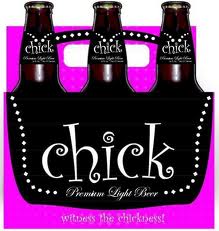I read a few months ago I came across a YouTube advert from Carlsberg Copenhagen which portrays their latest beer offering to the market – especially the female market, a beer called ‘Copenhagen’.
With the number of women who drink beer on the rise (in fact roughly 27% of the beer-drinking market in the United States is now women, up from 6% in 2009) producers are clearly seeing the need to market specifically for the gender who allegedly come from Venus. Historically; and by Carlsberg’s own admittance, beer has been marketed almost exclusively to men; and advertised at events perceived to be ‘male’ dominated. What is interesting about the Copenhagen is that the beer come in a bottle that looks more like a wine bottle (the drink historically preferred by women) and is described as:
so insisting that natural beauty needs no make-up, so tastefully stating that blonde is the new black….so not the usual suspect, so not like any other beer. The design for this “refreshingly different” beer’s packaging is sleek and minimal, also a departure from most other beers. Copenhagen is intended for modern women and men, who appreciate a refreshing taste delivered in a stylish design.
Then I came across an article in Time magazine the other day talking about Chick Beer. You can see from the picture that the marketing and packaging is clearly aimed at women. Chick Beer describes itself as the first American beer made for women, finally! It boasts a series of things that clearly women would look for in a beer. For example, it is light, low calorie; and low carb. Chick Beer also says that
for centuries, beer has been created, produced and marketed by and to men. At Chick, we think that it’s time for a new choice. Chick Beer celebrates women: independent, smart, fun-loving and self-assured women who love life and embrace all of the possibilities that it has to offer.
I think from a branding, marketing, advertising and ‘increasing your market-share’ perspective, both Carlsberg Copenhagen and Chick Beer are on to a good thing. There are more women (in terms of real numbers) in the world than men. There are more women (in terms of numbers) in the workplace then men. Women are independent, both socially and financially; and because they are not as expensive to hire as men (and because of the industries that were worst hit), the recent ‘Great Recession” has been dubbed a ‘mancession’ and the potential recovery dubbed a ‘femcovery’. In other words, why wouldn’t retailers want to appeal to the female market? In fact the football club Newcastle have also jumped on the female bandwagon. They are the first in their sector of the economy to design branded lingerie.
What this does do, however, is prove yet again (in my opinion) that there is a difference between men and women. I know we are all supposed to be considered equal (and socially and politically we supposedly are). I am enormously grateful to all the women before me who fought bravely for equal opportunity so that I can be a woman with equal opportunity to my male counterparts in the workplace. But we cannot escape our biological imperative, our different brain structures, our different perspectives and behavior patterns. In my opinion, the sooner we recognize the feminine versus the masculine, the sooner we can harness the good bits in that difference and use that for successful collaboration.



